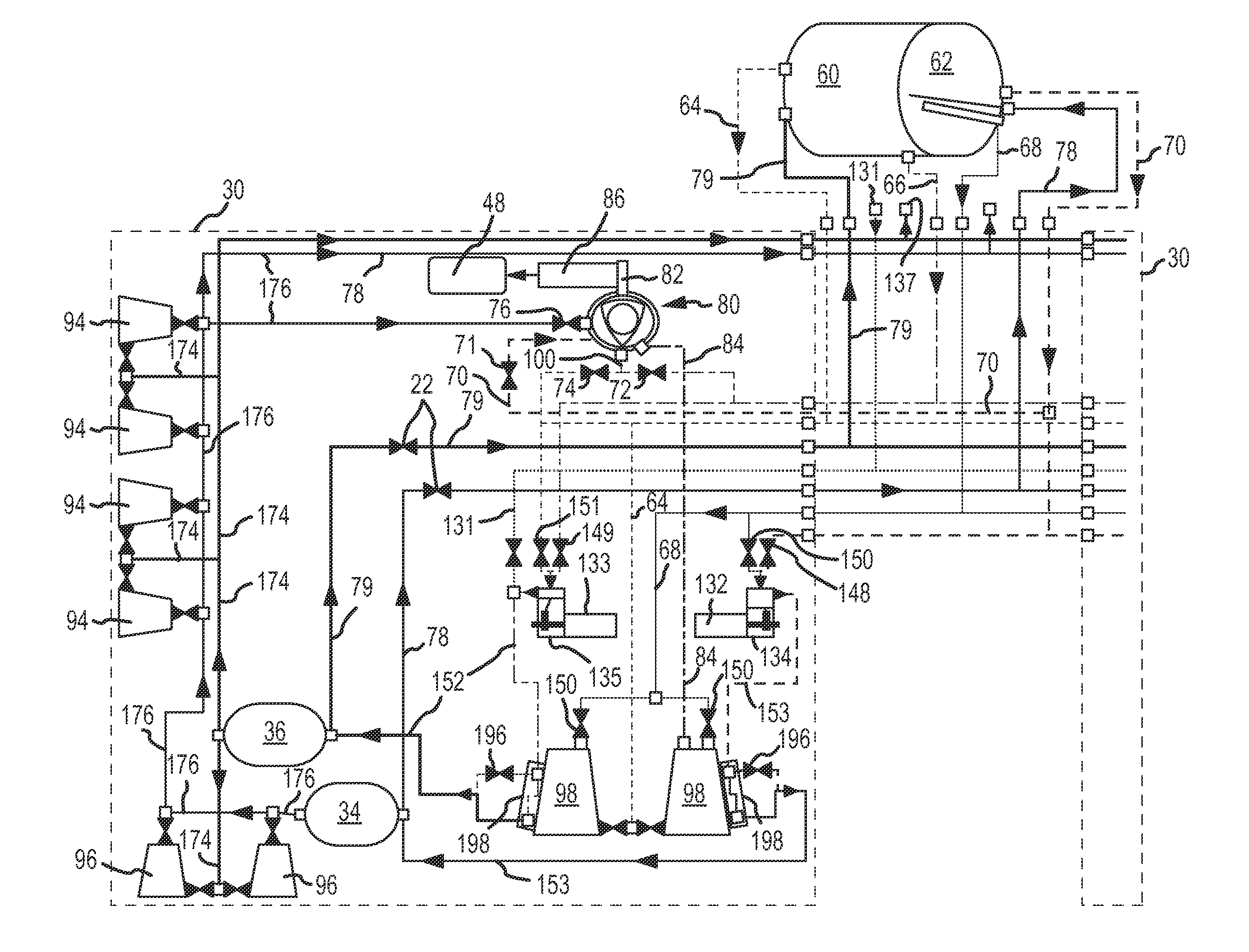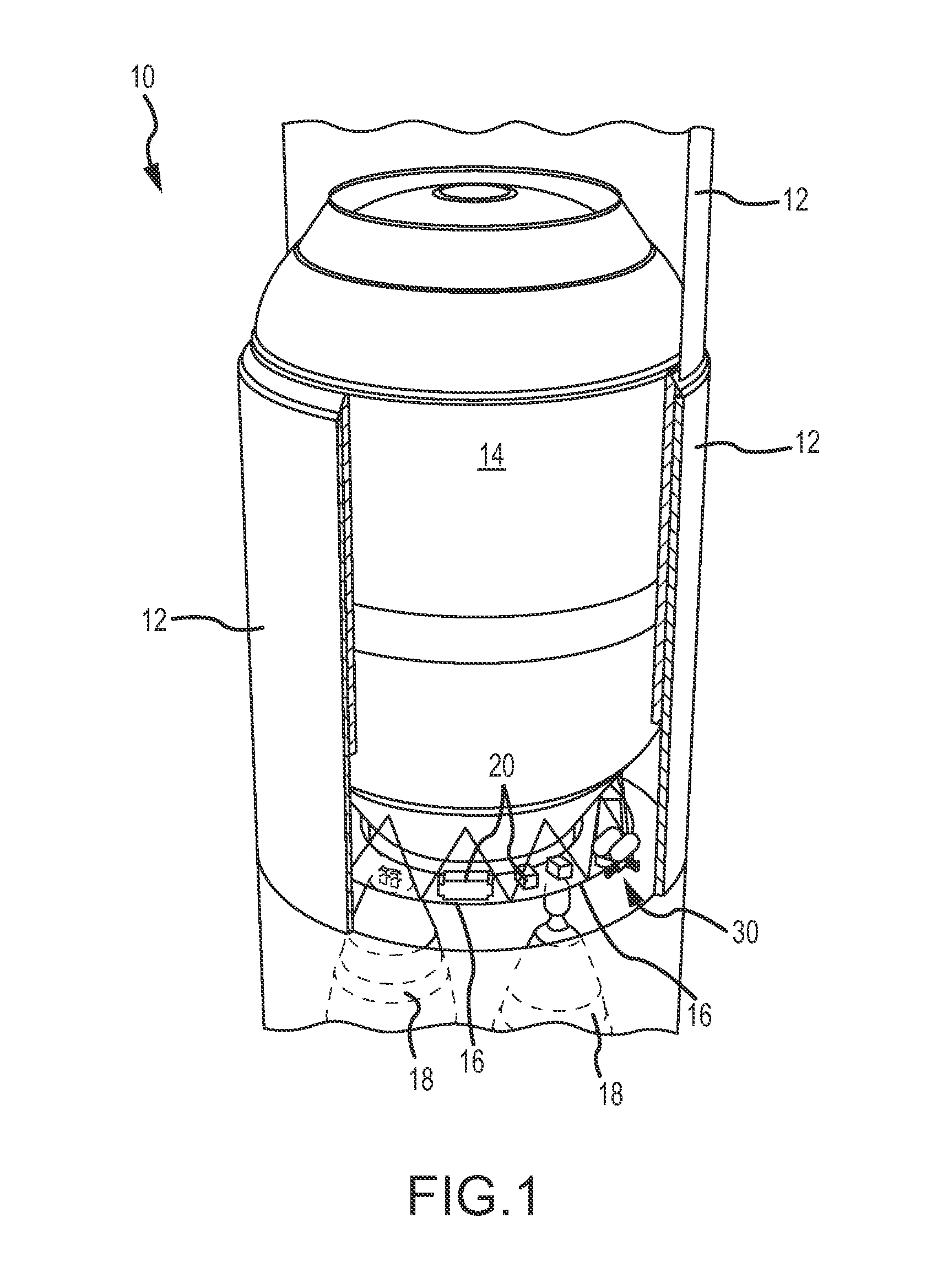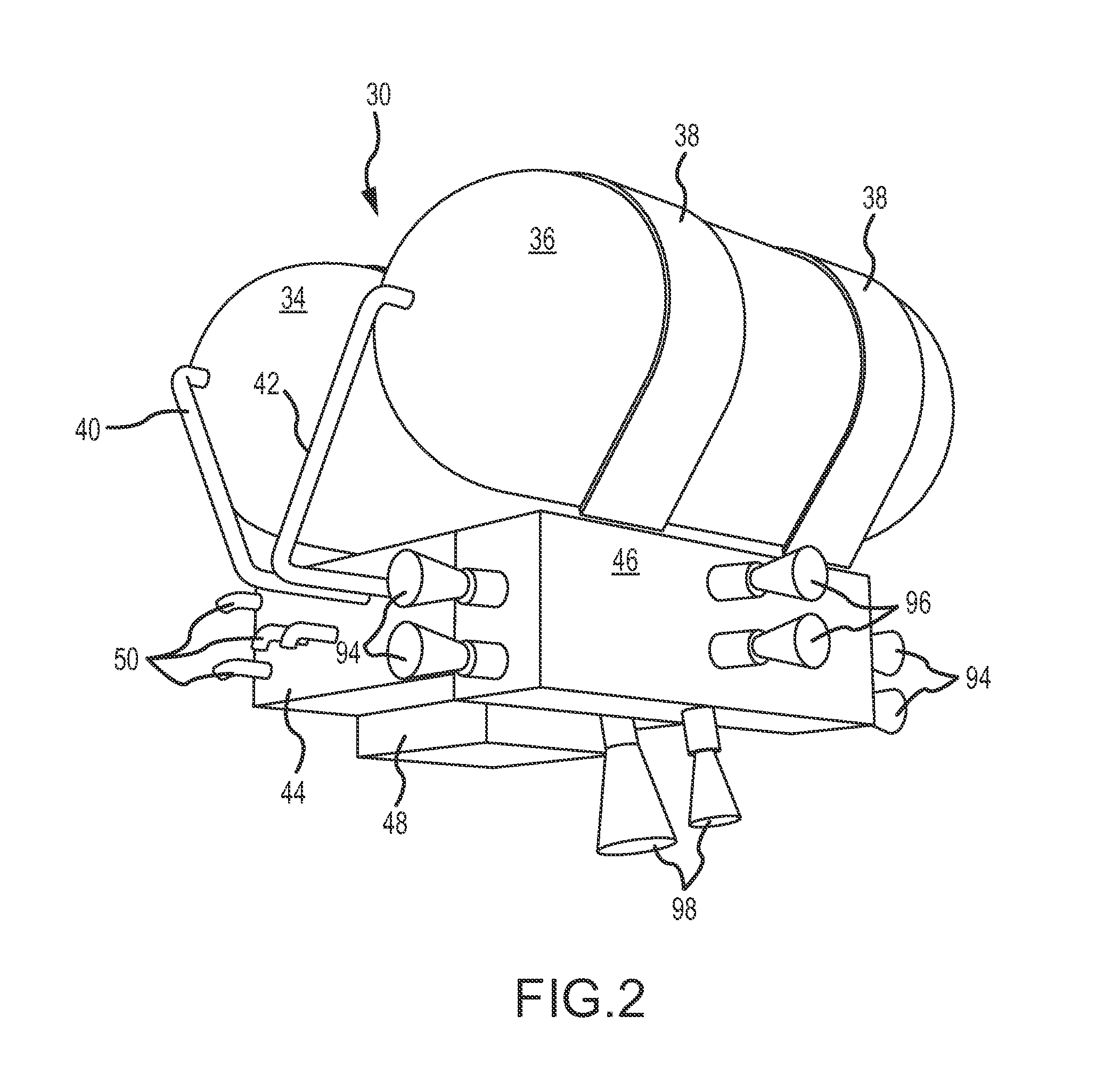Unspoken but also implicit is that commercially viable launchers must fill this broad range of demands since single-purpose launchers such as the Saturn
rocket or
Space Shuttle are cost prohibitive, even for governments with substantial space budgets.
Each individual
system on the launchers has been raised to a high level of performance which is very difficult to improve upon, even with large investments in
engineering development.
These vent valves are thus precision cryogenic regulators that are complex, costly and heavy.
However, during the ascent phase of flight and also prior to operation of the upper stage engines, the pressures within the vehicle tanks must be raised.
Without
system pressure maintained above saturation pressure, the propellants would boil within the pumps and they would cease to function properly.
However even the most advanced existing systems have strict limitations on their capabilities.
These systems all have a limited amount of GHe and hence the number of engine burns, tank size, and other factors are all limited.
Even a small leak of
helium from the storage systems can result in a catastrophic loss of pressurant and hence mission failure.
Therefore, tank designs may have to account for much higher pressures, such as a 60 psia capability, which results in a substantial
mass penalty.
A significant
limiting factor for all missions in space is accounting for the
ullage losses associated with the continual boil off of cryogens.
Heat is conducted down the side walls from the warm ullage side of the tank to the cold liquid side but this is inhibited by the relatively long conductive distances, reduced
thermal conductivity due to the cryogenic operating temperatures and low wall thicknesses.
Naturally, the amount of time that a hydrazine system can support
settling is strictly limited by the amount of propellant that it contains.
While the settling function consumes the vast majority of hydrazine capacity, the
attitude control task cannot be ignored.
Even if settling is eliminated, the
attitude control function alone can consume hundreds of pounds of propellant over the course of a multiday mission.
Regarding the use of hydrazine as a propellant, while its application to space vehicles is widespread, there are a number of problems associated with its use.
Hydrazine is a highly toxic, highly corrosive fluid that is compatible with only a handful of materials.
Handling hydrazine requires hazardous procedure precautions, often requiring the use of positive-
internal pressure inflatable SCAPE (Self Contained Atmospheric Protective Ensemble) suits to protect technicians loading a vehicle.
Hence, elaborate
thermal control measures including heaters are mandatory, thus burdening the electrical storage system and exacerbating propellant heating.
Hydrazine is also quite costly.
Hydrazine is also a very inefficient fuel, delivering only a miserly
specific impulse of 235 seconds.
Nevertheless, the continued use of hydrazine sets harsh boundaries on improving overall vehicle operations and costs.
Even with the best modern technology, these batteries are extremely heavy, costly and can only supply enough power for less than a day's operation of a vehicle such as a Centaur®.
Without a means to recharge these batteries, they set a strict limit on mission duration.
Unfortunately the two common sources of power for recharge are solar panels and
fuel cells, and these systems are both very costly to incorporate on a vehicle.
Use of solar panels requires
vehicle orientation control relative to the sun, and are physically bulky with complex deployment mechanisms.
A vehicle like Centaur® will generate acceleration forces in excess of 2 G's, and hence the mounting system for even a small solar array would be very heavy.
Fuel cells, while being more compact than batteries efficient and seemingly simple, are quite costly and complex to operate and support due to their intolerance of
inert gases within the reactant streams and due to the necessity to dispose of the water they produce.
To date, only manned vehicles such as the
space shuttle can justify their cost and complexity.
However if the vehicle could efficiently fly for longer, it would be extremely valuable.
The increasing amount of space junk in
orbit will soon require the deliberate disposal of not only obsolete satellites but also the stages which placed them in
orbit.
This disposal activity at present would impose large performance penalties which would drastically increase the cost to
orbit.
While it may be possible to redesign vehicle systems on a
micro level, that is, to redesign selected systems based on specific mission requirements, this design approach inevitably compromises the majority of missions and can also create a proliferation of system designs that are all slightly different and likely incompatible.
 Login to View More
Login to View More  Login to View More
Login to View More 


